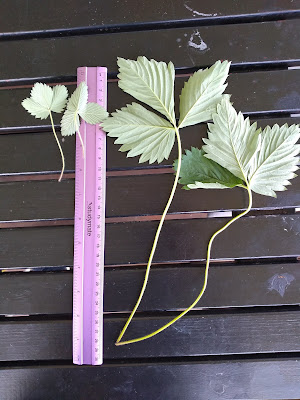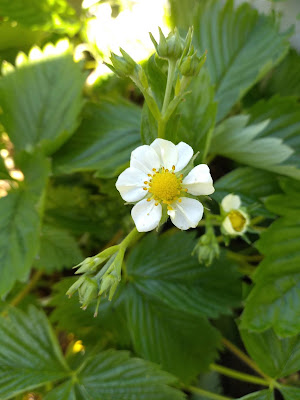Bees wax is rather useful for a variety of purposes. If you have a bee hive you eventually end up with extra wax. This doesn't tend to store very well unless it has been rendered. I also can't imagine using it for anything other than eating before it was rendered. So rendering beeswax is an important skill to have.
I have read some descriptions of how people render bees wax. Quite often they are difficult, time consuming, and sometimes even sound rather dangerous.
Below is how I render bee wax the easy way.
To be clear: I am not an expert. I am self taught. This is almost certainly not the best way to render wax. This method is fast, it is simple, it is safe, it is cheap, and it uses things I have in the home.
I don't know for sure, but I think once something has wax on it there will always be wax on it and I would hate to ruin pans that we use for cooking. My kids have a play kitchen in the back yard with old pots and pans and things, so instead of ruining pots and pans that we use I 'borrowed' these from the kids (just don't tell them).
I got a pan and another pan with holes in it that fit on top. The bottom pan needs to hold a few cm of water so there needs to be a gap between the two pans. If the pans are the right size they maintain a gap nicely, but I was using things that were never meant to fit together and were old and bent out of shape so I think I used an old metal cup or something to maintain this gap between the two pans.
 |
Two pans, the bottom one is half filled with water
|
I put a sheet of paper towel on top. Once the wax melts it drips through this paper towel onto the water. Dust, dirt, debris, propolis, parts of dead bees, and other impurities get caught in the paper towel.
 |
One sheet of paper towel on top
|
I then put my old dirty wax on top. Feel free to stack it high, it will melt down considerably. We don't tend to have a lot of spare wax. I collect it and keep it in an old ice cream container until I have enough to bother rendering wax. My kids eat little bits of this wax throughout the day for some reason.
I think I ended up with around 150 grams of wax at the end of this, which isn't too bad.
 |
Pile the old wax on top of the paper towel
|
I then put all of this in the oven. I set the oven to 200C and left it to melt. In hind sight I should have set the temperature lower. The flashpoint of beeswax is 204.4C, so I cam close to disaster! I think as the wax heated it melted and dripped through to the water, which could have kept it slightly cooler. The beeswax only needs to reach 62 to 64 to melt, and anything over 85C causes discolouration.
The more wax you have the longer it takes to melt. This lot was small so only took half an hour while I took the kids for a walk, but it can take a few hours if you have more wax.
 |
Wax melts quickly, it looks and smells kind of appetising at the start
|
 |
The wax melts and drips through the paper towel
|
Once it is finished the wax will have dripped through the paper towel and is floating on top of the water. The paper towel will have strained out most of the impurities. My kitchen smells a little like honey and baking at this stage.
 |
The paper towel strained out most of the impurities
|
This part is very important: when everything is still warm remove the paper towel from the tray. If it cools too much it will be stuck to your pan and can't be removed. If this happens, don't worry, just pop it back in the oven for a minute to warm slightly and then try again.
I am told that the paper towel can be cut up and used to light camp fires etc as the wax etc burns long. I haven't tried this myself. I would not use it to light the fire at home because it would likely not burn completely and the smoke may clog up the chimney.
 |
Melted wax floating on the water, let it cool!
|
 |
Rendered wax ready to be used or cut and stored
|
If you want the wax really clean you can render it again, or even render it several times to get it even cleaner. Each time it should come out a little cleaner. I only render once and it comes out a lovely yellow colour, but it really depends on what you want use you have in mind for the wax.
Once the wax has cooled it will solidify. It has been floating on water so put it somewhere to dry, then cut it up, put in a container or zip lock bag, and then it is ready to do whatever you want to do with beeswax. Rendered wax should last a very long time and possibly never go bad.
As I said at the start of this post, I am not an expert and this is likely not the best way to render wax. This method is incredibly simple, very safe, low cost, and yields decent results. If you know of a better way to render bee wax, or have any hints and tips that may be useful, please leave a comment as I would love to hear it!




























































